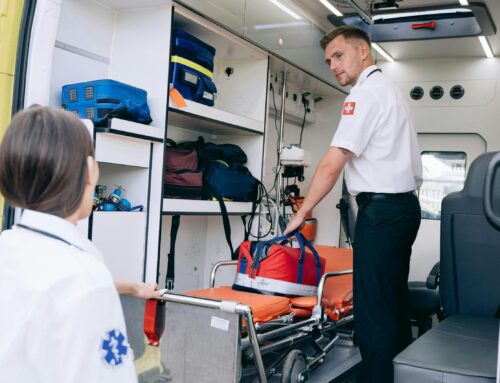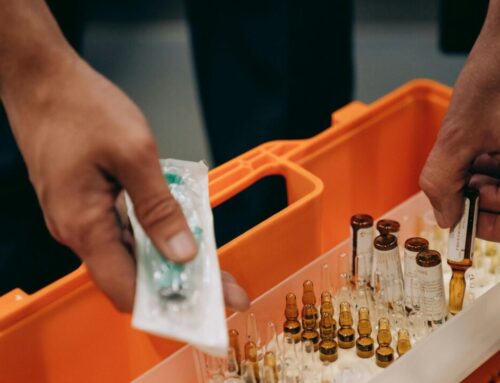As we all attempt to put the COVID-19 outbreak and the years of “new normal” behind us, the virus continues to increase its transmissibility, emphasizing the need for a population-wide solution to immunity. Research strongly proves that relying on intramuscular shots alone does not provide tissue-level mucosal immunity and highlights that mRNA vaccines do not achieve respiratory mucosal immunity against Omicron in people. In fact, it found that the only path to achieve this is via nasal or orally administered vaccines, which has proven effective in mice (Topol & Iwasaki, 1970). With 12 nasal vaccines in clinical development and four reaching phase three of clinical trials, it is very likely that we may be seeing nasal vaccines in our near future. So, what should we know about nasal vaccines?
Effectiveness
Researchers are seeing nasal vaccines be more effective in these early phases of clinical trials for COVID-19, but its benefits also apply to any airborne infection. One of the largest differentiators is that the vaccine builds up Immunoglobulin A (IgA) immunity in the nose where the virus first enters the body fighting it off before it can gain access. This type of immunity attacks the organism at the surface of the mouth or nose versus Immunoglobulin M (IgM) immunity that takes refuge in the body once the organism has already entered. Also called the mucosal immune system it creates a physical barrier of protection using immune and epithelial cells and mucus, keeping pathogens from reaching the underlying tissue, aka infecting someone. (Birkhoff et al., 2009). Additionally, it is reported that intranasal immunization can induce cross-reactive antibodies that might be indicative of immunity from more than one antigen (Topol & Iwasaki, 1970).
Administration
Besides the obvious, that an intranasal vaccine is much less invasive than an intramuscular vaccine, huge benefits are being realized in the ease of administration. Immunization can be provided quickly, effectively, and most important, safely by anyone, including the patients themselves. This is so important in pandemic situations when the vaccinations cannot be distributed quick enough.
Distribution and Transportation
Since the vaccine can survive in ambient temperatures, it is easier to transport and store than the intramuscular COVID vaccines. The two FDA approved intramuscular vaccines both require unique temperature regulation. Moderna requires that it be stored and transported at ‐20° C and can be refrigerated from 2‐8° C for up to 30 days. Pfizer can be transported at ‐20° C for two weeks and can be refrigerated from 2‐8° C for up to five days. Comparatively, “[The nasal vaccine] can be stored at 39 °F (-4 °C), but survives at room temperature, which makes it ideal for countries where meeting cold-chain requirements can be a challenge,” said Isabelle Dimier-Poisson, PhD when describing the protein-based COVID nasal vaccine developed by the BioMAP team at the French National Research Institute for Agriculture, Food and Environment (Moulun, 2022).
Cost
Depending on the temperature and type of storage used when transporting the vaccines, large costs can incur. Due to the very cold and precise temperatures needed for the intramuscular COVID vaccines, we saw extreme vaccine wastage due to failures in the cold chain. Vaccines had to be thrown out if they lost exact refrigerated temperatures required to maintain their safety and potency. With the proper packaging, insulated containers and cold solutions, the nasal vaccine can cut costs and save vaccines, ultimately saving more lives (Birkhoff et al., 2009).
- Topol, E. J., & Iwasaki, I. (1970, January 1). Operation nasal vaccine-lightning speed to counter COVID-19: Science immunology. Operation Nasal Vaccine-Lightning speed to counter COVID-19 | Science Immunology. Retrieved August 23, 2022, from https://metgedelravalelx.blogspot.com/2022/08/operation-nasal-vaccinelightning-speed.html
- Birkhoff, M., Leitz, M., & Marx, D. (2009). Advantages of intranasal vaccination and considerations on device selection. Indian Journal of Pharmaceutical Sciences. Retrieved August 23, 2022, from https://www.ncbi.nlm.nih.gov/pmc/articles/PMC2846493/
- Moulun, A.-G. (2022, February 21). Clinical trials of nasal COVID vaccine to start this year. Clinical Trials of Nasal COVID Vaccine to Start This Year. Retrieved August 23, 2022, from https://www.medscape.com/viewarticle/967753



